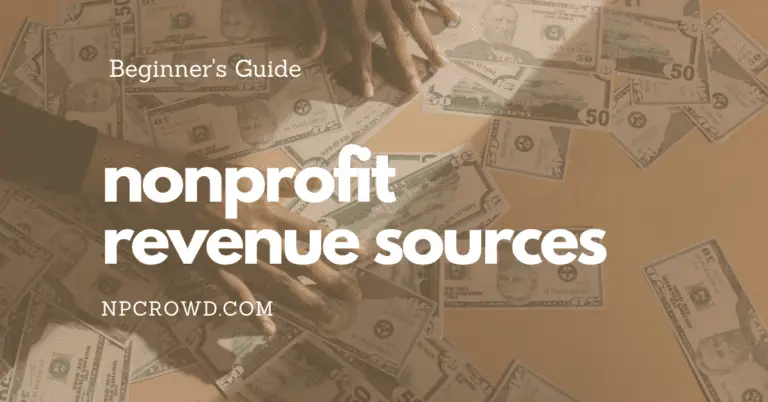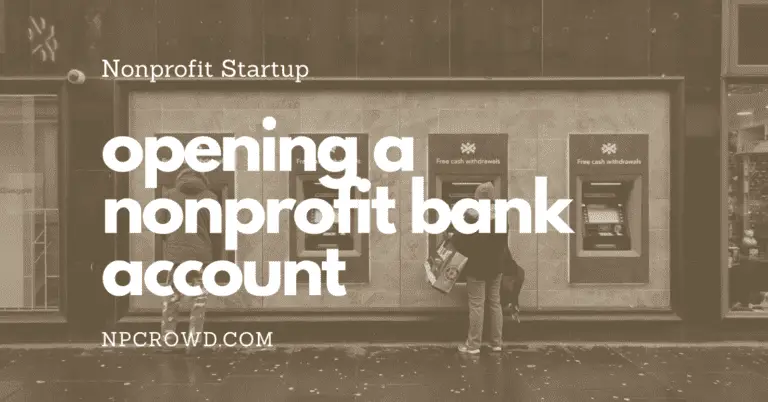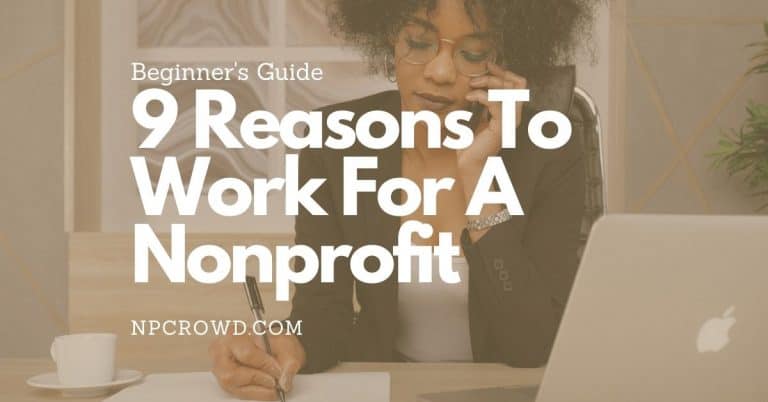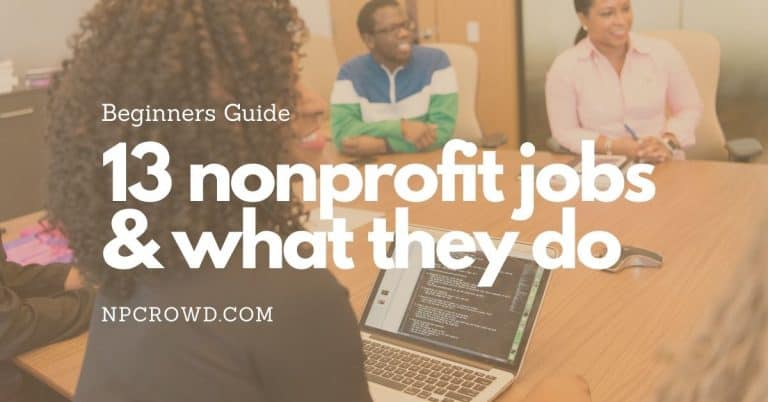Start A Nonprofit In 9 Steps and 91 Days: Step-By-Step Guide
Disclaimer: This post may contain affiliate links. These links, if used and purchases made, we may earn a small commission. These affiliate programs do not impact the recommendations we make or the resources we refer you to. Our focus is on providing you the best resources for your nonprofit journey.
I get it. You are excited about doing good and making social impact your thing. But, how can you start doing it quickly and in a budget-friendly way?Is it even possible to start up a nonprofit quickly?
Absolutely, it is possible to start a nonprofit quickly by following our 9 step guide. But, you need to be ready to put in a bunch of time in the first 2 weeks. The remaining time is mostly waiting.
Are you ready? Let’s find out how.
From Idea To Nonprofit In 91 Days
In general, starting a nonprofit can be done in 9 steps, and in the best of circumstances, can be completed in 91 days. These steps are: register the nonprofit name, appoint the Board of Directors, create bylaws, file Articles of Incorporation (formation), obtain an EIN, file Form 1023 with the IRS, and register with your state for nonprofit solicitation.
This is a fast-track plan we’ve developed as a guide to demonstrate the fast pace needed to even attempt to fully form a 501(c)(3) as quickly as possible.
I’m not saying this is what you should do or even that it is the best way, but given the steps involved, it’s a solid plan to help guide you on your way.
Let’s jump and start with the planning step.
1. Nonprofit Business Plans? Yes!
DAY 0-4 : Create the business plan
Wait a minute! A business plan for a nonprofit?
A nonprofit is in fact a business entity called a corporation. There are a few exceptions. You will need to run a nonprofit as a special type of business. Income and expenses matter. Accounts payable and receivable matter. Employment laws matter. Tax and IRS regulations matter.
Business savvy donors may want to see your business plan before helping with your initial funding campaign. They want to see that there is viability in what they are investing in.
A business plan can help prepare for all of the above.
How long will creating a nonprofit business plan take?
The amount of time it will take to develop your business plan will depend on how much prep work you’ve already done.
In our timeline, we give you 3-4 days to finalize your business plan if you want an opportunity to hit the 91-day time frame to start your nonprofit. But, you may need longer. That’s ok. Take this at your own pace.
What goes into a nonprofit business plan?
As a rule, there are 7 must-haves in a nonprofit business plan: an executive summary, program descriptions, market analysis, marketing plan, operational plan, organizational structure, and a financial plan.
The elements of a nonprofit business plan are:
- 1. Executive Summary – The executive summary is a 300-500 word summary of your plan. It typically includes the need for your nonprofit to exist, the opportunity that exists,
- 2. Program Description – Your program description is exactly as it sounds, a description of the products and/or services your nonprofit will initially offer.
- 3. Market Analysis – The market analysis starts with a summary of the size of your target market, followed by a market segmentation section, and then your competition analysis.
- 4. Marketing Plan (Optional) – Describe how you will raise the visibility of the programs. Will you be getting referrals? Will adult volunteers who are mentoring be advocates in the community? What role will the board of directors play?
- 5. Operational Plan – The operational plan is the nuts and bolts of how your organization will run and deliver your products or services. How will the nonprofit achieve the goals you’ve promised?
- 6. Organizational Structure – Describes the ownership (a corporation), the team roles, key individuals, and salary projections.
- 7. Financial Plan – This section includes your financial strategy, forecast and 3-year projected P&L and Balance Sheet.
Skip The Business Plan
If you feel you must skip the business plan, you can. It is not required by the state to incorporate, however, you still need to know some of the answers from a business plan. In fact, a good board of directors will want to see your plan.
But, if you really want to get minimal, here’s what we suggest.
- Executive Summary – 300-500 word narrative about your organization, the services it will provide and the market you are targeting.
- Budget 1-3 Years – Figure out what it is going to cost to keep your nonprofit afloat. That includes marketing, salaries & wages, compensation packages, legal and filing fees, cost of goods for services, rent, utilities, other overhead, and any other expenses you can foresee.
- Fundraising Plan 1-3 Years – Where, how, and how much of your income will come from what sources. Be sure you can show the calculations of how you got to these numbers. Now, cut your contribution income projection by 50%. Do your expenses still make sense. If not, adjust.
2. Nonprofit Names – Choose And Reserve
DAY 5 - Register Nonprofit business name with State
Congratulations. You made it through the hard part. That means you really are serious about starting your nonprofit. Let’s have some fun.
Today, you will select and register your nonprofit business name. The hardest part of this process is deciding on a name.
But don’t worry, your legal business name is important, however, you can quite easily operate under a DBA (Doing Business As) name in most states with minimal paperwork.
PRO TIP: The person who reserves the business name should also be the person to sign the incorporation forms, business registration, and cover letter. This will makes things go smoother using your reserved business name.
Once you land on a few potential names, we need to do a little homework like making sure there are no existing trademarks, or existing registered businesses with your name.
Each state also allows you to search for registered businesses. Find your Secretary of State’s website and do some quick searching. Here is a map to Nonprofit Ally which links to an article with links to each Secretary of State where you can check.
Once you find that perfect name that is not trademarked, or even close and is not already registered in your state, it is time to get things ready to file, but there’s one more important step.
NOTE: Some states require you to reserve your business name before filing for incorporation. Check your Secretary of State’s website for details.
3. Select And Appoint Your Board Of Directors
DAY 6 : Identify potential board members DAY 7-11 : Invite board members
You need a nonprofit corporation Board of Directors
Selecting your first Board of Directors is a key step in starting a nonprofit. In the next step, you will create the corporation that will be your nonprofit. Corporations have a Board of Directors. You will need one as well.
So, how many board members are required for nonprofits? Each state has its own rules for Nonprofit Corporation boards. Generally a nonprofit needs a minimum of 3 board members (e.g. Texas requires a minimum of three Board members).
Even if your state requires less, we recommend three so that there are no tie votes should a motion not receive unanimous approval. It also diversifies thinking and areas of expertise.
Considerations to select your first nonprofit Board
Start by identifying the needs of the organization. Will you need ongoing legal or health care wisdom? Is business or finance knowledge and experience going to be highly beneficial?
Another consideration is to ensure your Board is willing to have 100% participation in donations to the nonprofit. The amount matters less than having 100% participation. Many grants will ask about the size and percent of board participation in giving to the organization. You want to answer that showing full participation.
Steps to create your nonprofit Board
There are 4 steps to creating your first nonprofit board
- Identify organizational needs – Legal, financial, technology, healthcare knowledge, fundraising, etc…
- Create potential board member short-list – Who are the top potential candidates that create the right might of meeting organizational needs
- Discuss and determine interest – Hold conversations with potential candidates in order to gauge interest before actually inviting them to the Board.
- Invite board members – Once you validate interest, assess they are still a great fit, and there is agreement as to the type and scope of commitment as a board member, make a formal invitation to the board for the specified term.
4. Create Your Nonprofit Corporation
DAY 12 : Register nonprofit corporation with the state
Now comes the fun part, registering your nonprofit as a corporation in your state. Woohoo!
First, each state does this slightly differently. And, if you will fundraise and/or operate in more than one state, you will need to register in all those states as well.
The costs will also vary by state. We have a breakdown of the state incorporation costs in our article “How Much Does It Cost To Start A Nonprofit“.
In general, the process of creating a nonprofit corporation includes completing a form and paying a few. Some states also require you to fill out another form, with or without a fee, to register to perform nonprofit fundraising. Finally, you will want to file for sales and use tax exemption with your state. This allows you to avoid paying state sales taxes on many purchases for your nonprofit.
As a whole, the state incorporation form will require these common elements:
- Nonprofit legal name – You already found a business name in Step 2 above. This is the place for it.
- Register[ed/ing] Agent’s Name and Address – This is usually the founder or a registered agent if using a legal firm.
- Business Address – The mailing address of the nonprofit.
- Name and Address of each board member – You already invited and received confirmation of these people in Step 3 above
- Purpose(s) for which the nonprofit is being organized – Your purpose statement for the nonprofit. Who you serve, how you serve, and why your serve.
Now that the form is filled out, send it along with your payment. Most states allow you to do this online or via a mail delivery service. If you file via mail, send it certified or FedEx to ensure tracking of the delivery.
To achieve our schedule to start a nonprofit, we recommend using the online methodology.
[PRO TIP] – Be sure to identify the payment methods accepted by the state if using mail delivery. You don’t want your form to be returned with unacceptable payment methods and have to resend.
5. First Board of Directors Meeting
DAY 13 : Conduct inaugural board meeting
Now that you have filed your legal corporation, we have to wait until you receive confirmation from the state that your corporation is now legally formed.
As soon as you receive confirmation that your nonprofit is a legal corporation, it is time to have your first board meeting.
Follow Robert’s Rule of Order as a general practice.
Your first Board meeting will have agenda items on it that will be unique to starting the nonprofit.
In the first Board Meeting of a new nonprofit you should cover 9 areas:
- Attendance/Quorum – Log who attended and that quorum exists
- Elect a temporary Chairperson (They run the meeting once elected)
- Elect a temporary Secretary (They take the meeting minutes once elected)
- Report the Nonprofit Articles of Incorporation filing officially in the minutes
- Adopt the Bylaws
- Appoint Officers – Nominate, vote, and install 1st Board Chair, President or Executive Director, Treasurer, and Secretary.
- Designate Principle (Corporate) Offices – Just the address of the corporation’s principal office.
- Authorize corporate bank account
- Authorize filing with IRS as a Tax Exempt Organization under 501(c)(3)
All 9 items should be documented with motions, seconds, and votes in your meeting minutes. Remember, your meeting minutes typically have a permanent retention period. So, get them approved at the next Board meeting and keep them in your special permanent storage area for corporate records.
6. Get Your Employer Identification Number (EIN)
DAY 14 : Obtain Employer Identification Number (EIN)
Woohoo! You are a formal nonprofit corporation in your state and have had your inaugural board meeting that authorized you to open a bank account for the organization and file as a 501(c)(3) for IRS tax exemption status.
But wait just a moment. There is one piece of information you need before doing that.
It is time to apply online for an employer identification number (EIN) for your nonprofit. This is a number obtained from the IRS using form SS-4. Think of it as similar to a social security number for your organization. It is the key identifier for everything related to taxes, or the exemption from them.
Don’t mistake this for your nonprofit registration number for your state.
Your EIN will be used in the next two steps and for the life of the nonprofit.
7. Tax Exempt Organization Application with the IRS (Form 1023)
DAY 14-15 : File Form 1023 DAY 15-90 : Wait for Letter Of Determination
Congratulations, you’ve reached the pinnacle step in the process, and the step that will have you waiting many weeks, filing for your Internal Revenue Code 501(c)(3) as a tax-exempt organization.
LINK: https://www.irs.gov/charities-non-profits/applying-for-tax-exempt-status
This filing is performed by completing IRS Form 1023 or Form 1023EZ. You can find yourself waiting 4-12 weeks for a determination to be reached as to the tax-exemption status of your nonprofit.
The 1023EZ is easier to complete and you may be eligible to use it if you meet all the criteria including projected less than $50,000 per year in annual gross receipts for the next three years.
Form 1023 is a lot longer, but it ensures that once you are approved, you are good to go as long as you follow the rules. Receiving your 501(c)(3) from an inerrant Form 1023EZ filing could land you and your nonprofit in hot water.
In Form 1023, the IRS is asking for a lot of details. Thankfully you have much of the needed information already.
Be prepared to complete Form 1023 by having:
- Legal corporation name
- Nonprofit mailing address
- Nonprofit EIN
- Fiscal Year dates
- Contact information
- Officers, Directors, and Trustee names and contact information
- Articles of Incorporation
- Business registration information (Certificate of filing)
- Bylaws (including dissolution and conflict of interest clauses)
- Your NTEE Code (See Appendix D)
- Any Intellectual Property specifics
- Compensation of key directors, employees, and individual contractors.
- Financial projections including, income and expenses (remember that business plan?)
- Statement of Functional Expenses
- Balance Sheet
There are specific tests to ensure you meet the requirements of 501(c)(3) or other statuses. Additionally, specific types of organizations like schools and churches will have additional questions to answer.
Once you pay the fee and submit the form online, it is time to wait. The IRS processes these applications on a first-come-first-serve basis. It’s going to be a while. But one day, you will receive a “Determination Letter”.
Lord willing, your determination letter will state those magic words, “We’re pleased to tell you we determined you’re exempt from federal income tax under Internal Revenue Code (IRC) Section 501(c)(3).”
Note: It’s beyond the scope of this article, however, you can request a “retroactive exemption” which allows contributions received prior to the IRS determination letter to be retroactively exempted once your nonprofit is determined to be exempt by the IRS. Without this, you cannot raise funds in a tax-exempt manner until your letter of determination if finalized.
8. State Nonprofit Solicitation Registration
DAY 91 : Register with state for nonprofit solicitation
Woohoo! You have received your IRS Determination Letter. That is a huge step! You’ve done an awesome job.
The next step, in some but not all states, is to register for Charitable Solicitations. That means, being able to raise funds from donors as a tax-exempt nonprofit.
This is done after receiving your IRS determination letter.
See your state’s Secretary of State website for more information.
Just don’t start doing fundraising until steps 8 and 9, as applicable, are completed.
9. Bank Accounts
DAY 91 : Open business bank account
One more step!
Now that you have your EIN and received your IRS Determination Letter, it’s time to open your Business Checking and Savings accounts for the nonprofit.
You will need to bring a few things with you to open the business bank accounts:
- Your State Issued ID or Passport
- The Nonprofit EIN
- The nonprofit Board meeting minutes where you are authorized to open the account.
- The nonprofit business registration documents
- The nonprofit’s initial deposit monies
If the board authorized the Executive Director and Treasurer to open the bank account, you will want both as signatories on the account.
There are some things you’ll want to think through when selecting a bank, especially for local nonprofits. So don’t just use a big national bank chain because you recognize the name. It may not be the best in the long run.
The NPCrowd Nonprofit Startup Fast-Track Timeline
Below is a summary of the NPCrowd Fast-Track Startup plan. Of course, neither we nor you can ensure all these items can be completed in the timeline below, but if you want to start a nonprofit quickly, this is a general sense of the pace you will need to move at in order to give a chance at finishing in 91 days.
Our thinking is that if someone really wanted to go from idea to nonprofit during a two-week vacation from their regular paying job, they could. This plan gives you a guide to follow to get the bulk of work done during the first 2 weeks.
| Nonprofit Startup Action Step | Fast Track Action Plan Day |
|---|---|
| 1. Create the business plan | DAY 0 – 4 |
| 2. Register Nonprofit business name with State | DAY 5 |
| 3. Select and appoint founding board members | DAY 5 – 11 |
| 4. Register nonprofit corporation with the State | DAY 12 |
| 5. Conduct first board meeting | DAY 13 |
| 6. Obtain Employee Identification Number (EIN) | DAY 14 |
| 7. File Form 1023 for IRS 501(c)(3) exemption application (Wait!) | DAY 14 – 90* |
| 8. Register with State for nonprofit solicitation | DAY 91 |
| 9. Open a bank account | DAY 91 |
*Note – You’re waiting for your determination letter. This process could take 4-12 weeks or more depending on the IRS processing time. Be patient.
How To Start A Nonprofit Next Steps
Resources
- https://www.irs.gov/charities-and-nonprofits
- https://www.bridgespan.org/insights/library/boards/recruiting-and-keeping-good-board-members
- https://nonprofitally.com/start-a-nonprofit/nonprofit-bylaws/
- https://blog.joangarry.com/interview-questions-non-profit-board-members/







